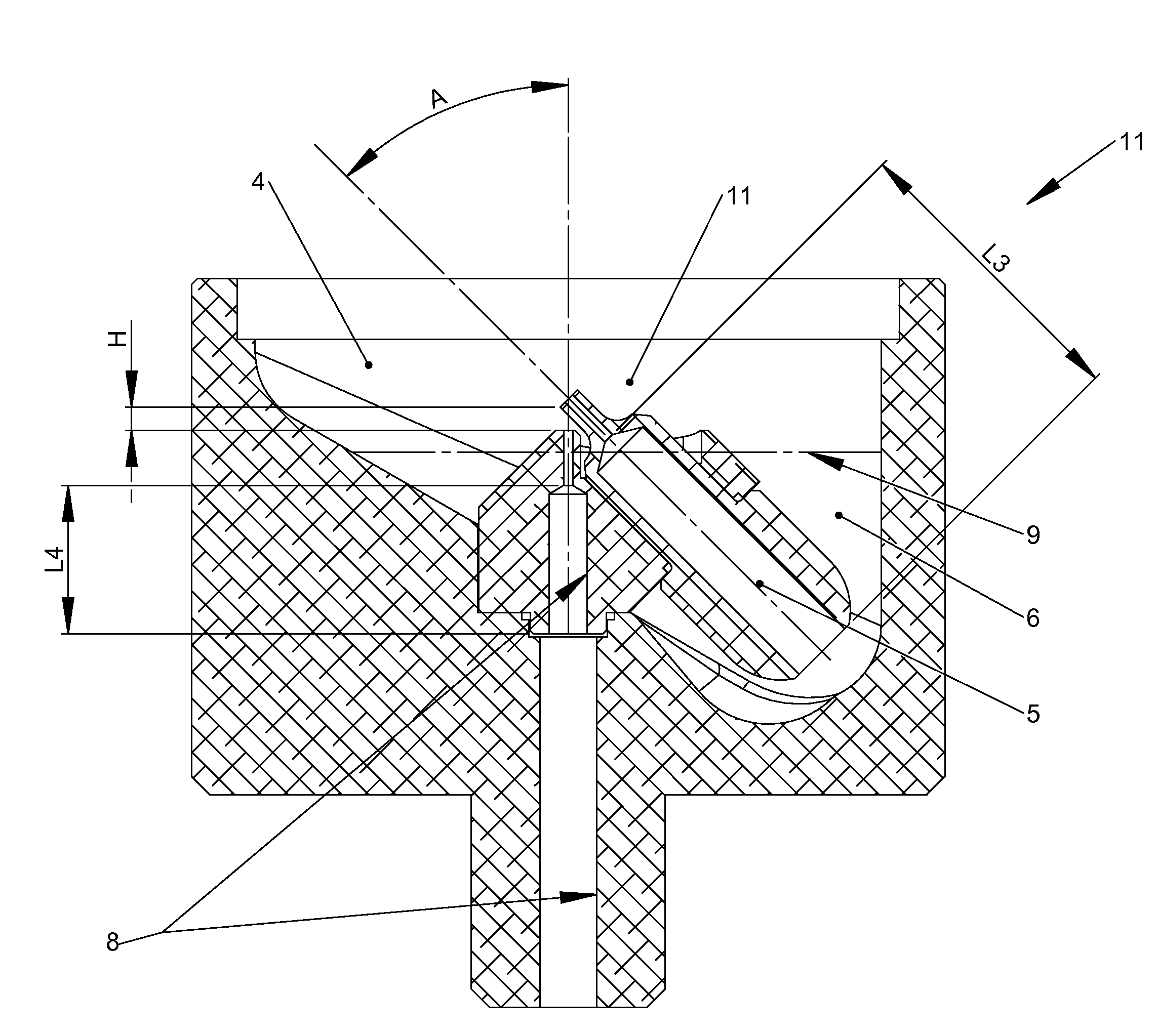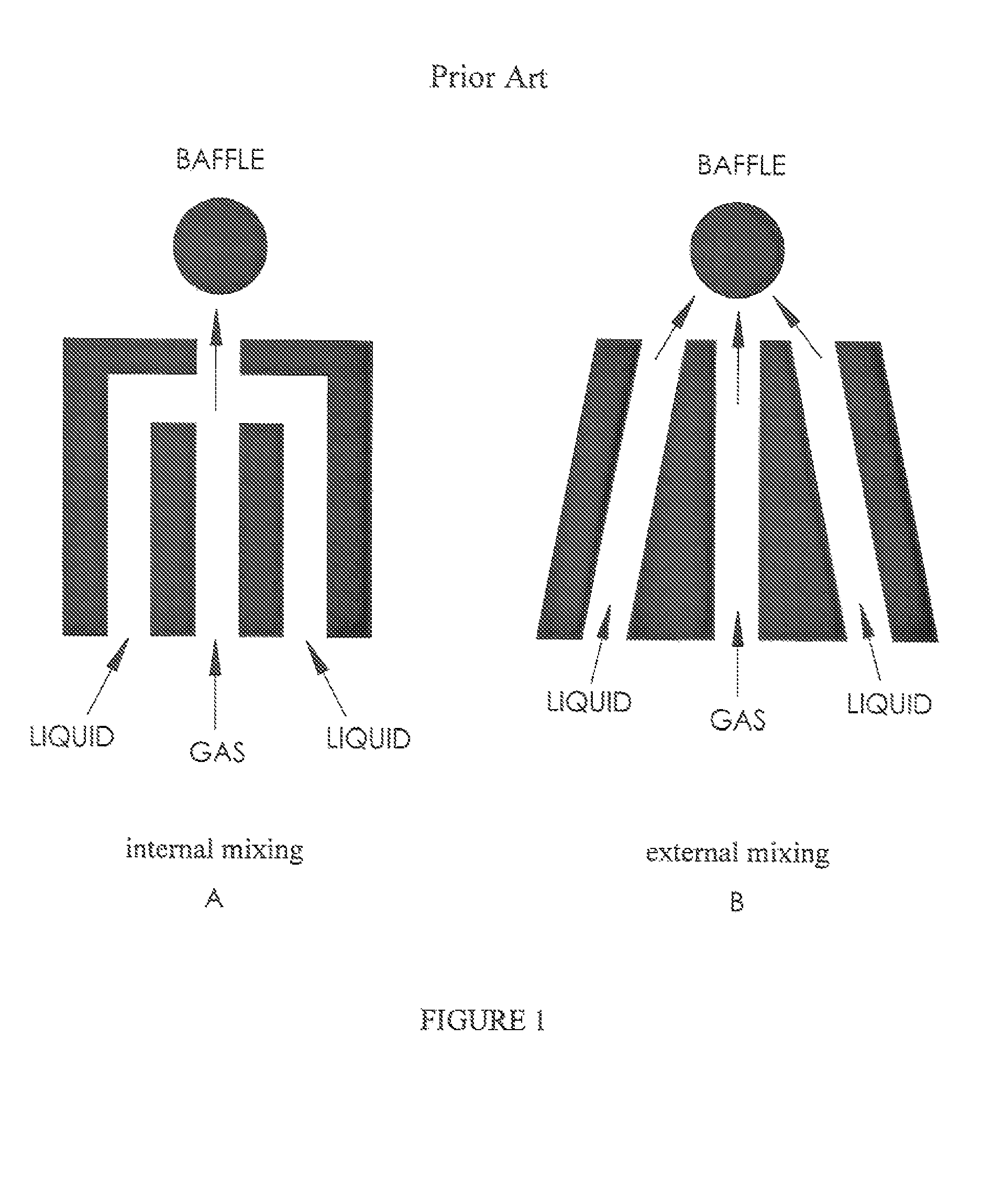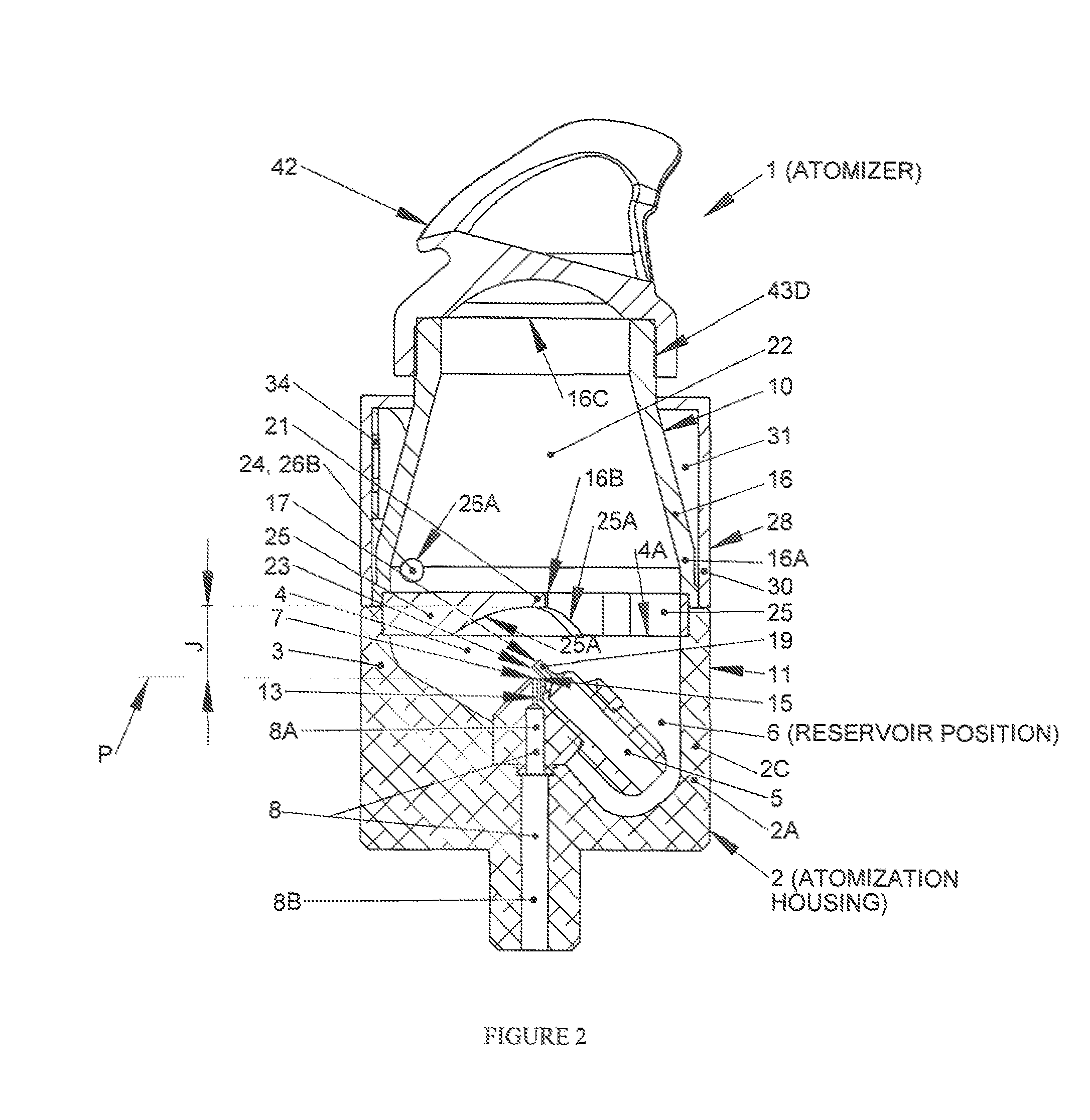Aerosol generating and delivery device
a technology of generating and delivering devices and aerosols, which is applied in the direction of lighting and heating apparatus, combustion types, separation processes, etc., can solve the problems of insufficient use, inadequate devices utilized to deliver such systemically absorbed drugs, and insufficient devices for many applications. to achieve the effect of effective liquid delivery and increased viscosity
- Summary
- Abstract
- Description
- Claims
- Application Information
AI Technical Summary
Benefits of technology
Problems solved by technology
Method used
Image
Examples
Embodiment Construction
[0064]Aspects of the present invention include aerosol generating and related delivery devices, such as atomizers and nebulizers. Further aspects include a filter member configured for use with such devices. Additional aspects include integrated atomizer and particle dispersion chamber apparatuses. The technology disclosed herein may have medical applications as well as non-medical applications. Further, various adapters may be used to configure the technology to deliver aerosolized particles to specific areas of the human body as well as to configure the technology for specific purposes (e.g., delivery of aerosolized particles to the vicinity of a user or to a target surface).
[0065]With respect to exemplary medical uses, prior art topical drug delivery methods are ineffective at penetrating very far into the nasal cavity and not at all into the paranasal sinuses. This is a significant limitation / problem, because systemic delivery via inhalation utilizing the nasal mucosa and mucosa...
PUM
 Login to View More
Login to View More Abstract
Description
Claims
Application Information
 Login to View More
Login to View More - R&D
- Intellectual Property
- Life Sciences
- Materials
- Tech Scout
- Unparalleled Data Quality
- Higher Quality Content
- 60% Fewer Hallucinations
Browse by: Latest US Patents, China's latest patents, Technical Efficacy Thesaurus, Application Domain, Technology Topic, Popular Technical Reports.
© 2025 PatSnap. All rights reserved.Legal|Privacy policy|Modern Slavery Act Transparency Statement|Sitemap|About US| Contact US: help@patsnap.com



